On February 6, the two-day international symposium of the Kolkata-based Centre of International Modern Art (CIMA) kicked off, close on the heels of the 2022 edition of the CIMA Awards, which took place the day before at Taj Bengal. Owing to the restrictions caused by the pandemic, the symposium, organised in partnership with Ashoka University, is taking place online this year. The virtual nature of the event, however, can act as no deterrent to the excellence of the panel discussions, three of which took place on Day 1.
The welcome note by Malabika Sarkar, the vice-chancellor of Ashoka University, set the tone for the symposium, the theme of which is Imaginations – Rural, Urban and Global. “The pandemic has mandated isolation for all of us, causing a deep sense of a fractured life. When the virus finally mutates to become a seasonal irritant, humanity will need not just scientific interventions but also a healing of the spirit. And what can be a better source of healing than the world of the arts, the product of great imagination?”
Echoing this sentiment and reflecting on the virtual nature of the symposium was the director of CIMA, Rakhi Sarkar, who, in her statement on Imaginations, said, “The subjects for debate are in line with the concerns of our current society. Imagination has a huge spectrum, and different ways of fighting decay and degradation to produce something sustainable. Imagination is the need of our times.”
Art and Crisis
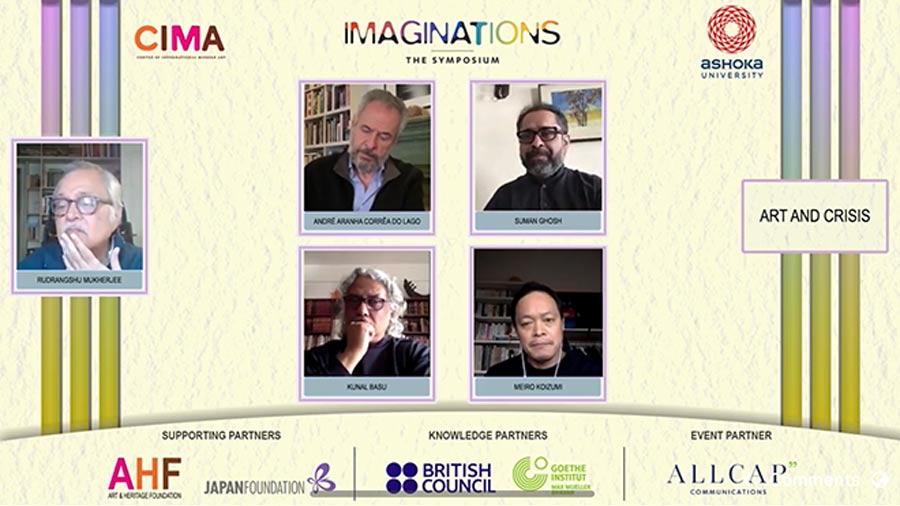
Rudrangshu Mukherjee, chancellor of Ashoka University, in conversation with the panelists of the session, ‘Art & Crisis’, during the symposium
The first session, titled Art and Crisis and moderated by the historian and chancellor of Ashoka University, Rudrangshu Mukherjee, focused on the role of art in understanding, responding to and finding consolation in the face of disaster, be it economic, environmental, social or global health-based. “As Rakhi Sarkar said, art heals, art consoles,” observed Mukherjee. “Can art, and other forms of creativity, flourish in crisis?” he asked, inviting a large scope of responses from the panelists – Brazil’s ambassador to India, André Corrêa do Lago, the author, Kunal Basu, the Japanese visual installation artist, Meiro Koizumi, and the filmmaker, Suman Ghosh.
“Even more than the question of understanding and finding consolation in art in the face of disaster is the question of overcoming it,” said Corrêa do Lago. “Both India and Brazil, in spite of being mostly mentioned in the international context in relation to our challenges, have been able to develop relevant and universal art because we face challenges that developed nations have overcome and forgotten. Art plays a role in reminding the world in the face of inequality that progress is essential.”
“We know crisis breeds art,” said Basu, “but what kind of artistic responses do we find? There are three principal ways: art of protest, art of enquiry and art of escape…. But the real calling card of art is surprise; and I, like the rest of us, would be open to being surprised by art as a response to our crisis.”
Koizumi observed, “Art is powerful, albeit a slower medium of change compared to journalism and activism. But art can deal with images and sometimes images are stronger than fact. Art is a way to challenge official history; by going straight to the individual, it undoes fixed histories.”

'Trapped Words', single screen video installation, Meiro Koizumi www.meirokoizumi.com
Ghosh reflected on the instrumental purpose of art from a filmmaker’s perspective. “Art embodies the human capacity for shared empathy; when Meiro talks about the Iraq war and bombings in Japan, the crisis to me seemed to be a universal one; it’s the shared empathy which is a huge benefit of art. Not just empathy among humans but also empathy between human and non-human species…. Another vital concern is how politics engages with the process of creating art. This is important to recognise.”
Ending the session with comments on the different strands of art as utility, its relationship with politics, its universality for the human condition, and even “art as trauma”, Mukherjee observed that the discussion had “traversed from the locality to the globe” – very much in keeping with the theme of the symposium.
Container & Content
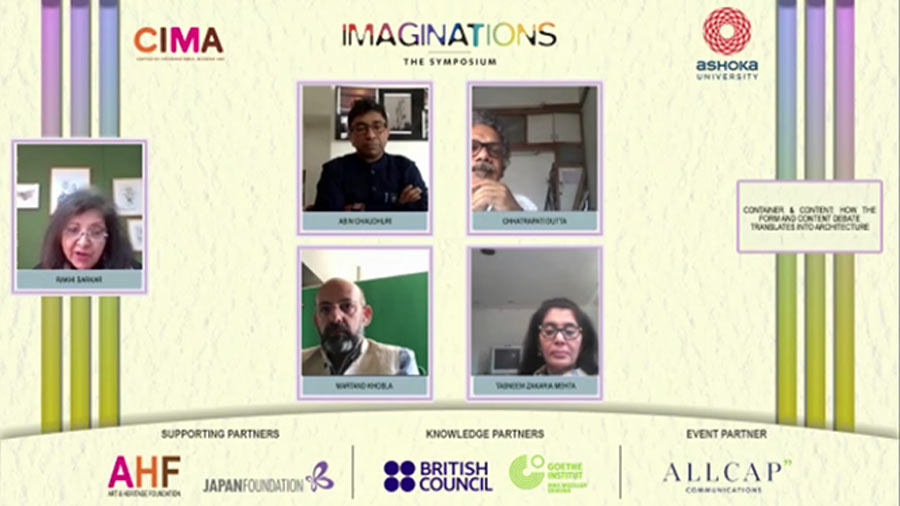
CIMA director Rakhi Sarkar in conversation with the panelists during the session, Container & Content: How the Form and Content Debate Translates into Architecture
There were more ideas to engage with in the session moderated by Rakhi Sarkar on the subject Container & Content: How the Form and Content Debate Translates into Architecture. Going beyond the link between art and architecture, Sarkar reflected on the proliferation of exceptional architecture all over the world, the idea of content, and wondered how crucial it was to strike a balance between container and content.
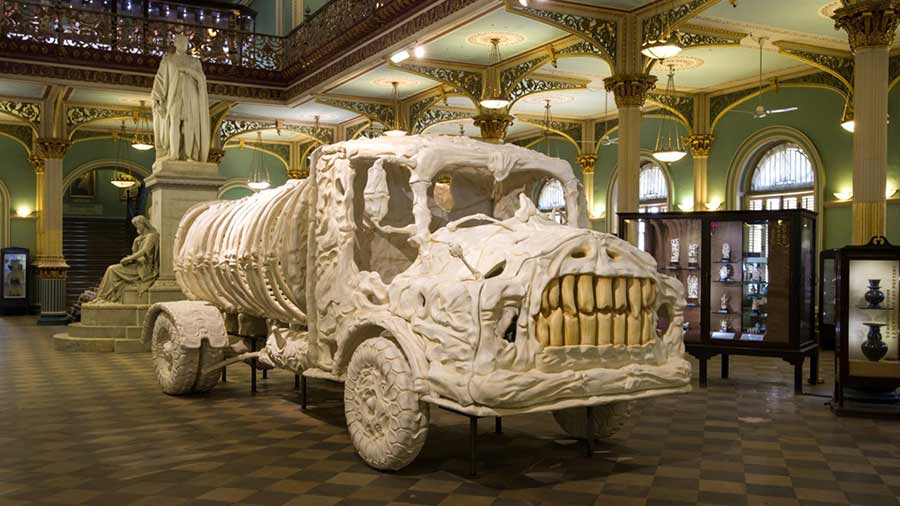
Jitish Kallat’s 'Aquasaurus', 2008, resin, paint and steel, 100 x 105.9 x 270.9 inches, displayed at the Dr. Bhau Daji Lad Museum in 2018 as part of the exhibition 'Asymmetrical Objects'
“This will be a never-ending debate,” said Abin Chaudhuri, architect and founder and principal of Abin Design Studio. “The container changes according to the idea of what its content is. Given the idea of restoration and space, sometimes a container looks or acts like a canvas. But the container and content also get merged, and the container has to respond to what kind of content we want. With immersive technology, there’s an immense opportunity to play with the idea of container and content.”
“This debate is rather recent,” said Chhatrapati Dutta, principal of the Government College of Art & Craft, Kolkata. “If you go back 30,000 years or more, the idea of container and content didn’t exist at all. Take the Sistine Chapel for instance; Michelangelo’s magic dissolves the boundaries between architectural and artistic spaces.”
Martand Khosla, architect and founder of Romi Khosla Design Studio, reflected on the museum’s cultural evolution from an elite space to a democratised one. “Museums are charged political spaces. What kind of architecture would that require? Architecture becomes a mediator between these larger ideas and what is contained.”

The restored Dr. Bhau Daji Lad Museum in Mumbai, which will celebrate its 150th anniversary on May 2, 2022
Speaking about the restoration of Mumbai’s iconic Dr. Bhau Daji Lad Museum, Tasneem Zakaria Mehta, the managing trustee and honorary director, observed that the 19th century ‘container’ had been originally designed to create a sense of awe and to assert a sense of knowledge and colonial superiority. “How do you activate a space like that? How do you redo a structure with a colonial history and address that history? By bringing in a contemporary perspective. We created a sense of the original in order to destabilise it and encourage the audience to question its original purposes.”
Will large buildings be a feasible proposition for the future, given the climate crisis and environmental concerns? “The future of the museum space will be far more ephemeral, where it can serve many more purposes,” opined Chaudhuri. Khosla differed a bit when he said, “the counter to large buildings can’t always be an ephemeral structure. The debate on sustainability had to address not just permanence or impermanence but the choice of material and nature of construction.”
Watch the first two sessions here.
Role of Museums and Universities
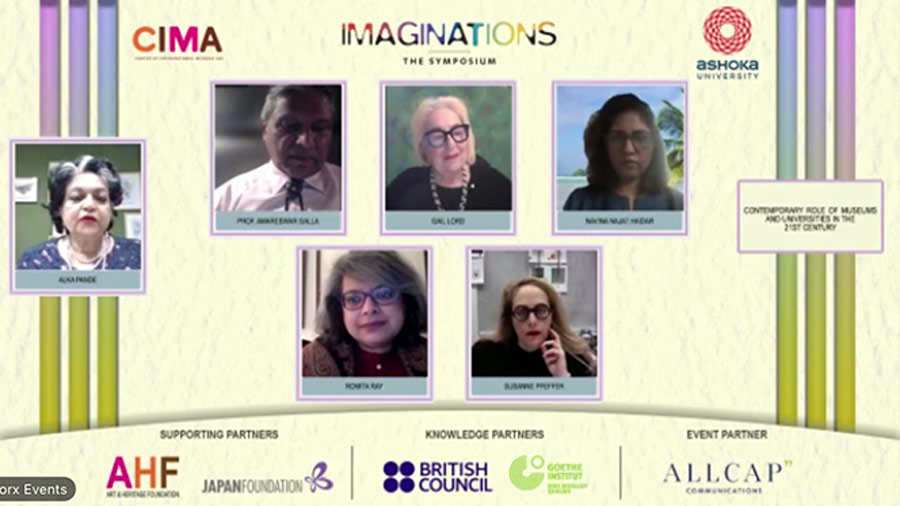
Alka Pande in conversation with the panelists of the third session, 'Contemporary Role of Museums and Universities in the 21st Century'
Taking the conversation on museums forward was the day’s final session titled Contemporary Role of Museums and Universities in the 21st Century, moderated by Alka Pande, who is consultant, art advisor and curator, Visual Arts Gallery, India Habitat Centre, New Delhi. “Museums have undergone numerous avatars, from being object-based to immersive,” she observed. “Given the question of how challenging it is to bring people into the museum space, can the virtual replace the object-based experience?”
“Science is at the basis of museums but we often don’t think about it,” said Gail Lord, president and co-founder, Lord Cultural Resources, a Toronto-based global cultural consulting practice which offers planning services for museums, art galleries and other cultural institutions. “Imagination is the accumulation of democracy, science and community. It’s about unconventional spaces, bringing the past and present together and thinking imaginatively.”
Navina Najat Haidar, curator-in-charge of the Department of Islamic Art, Metropolitan Museum of Art, New York, spoke of religious interconnection and exchange, and how “every work of art opens up a set of conversations and questions that need to be explored”; Romita Ray, associate professor of art and music histories, Syracuse University, reflected on the university or college museum as places of learning and discovery: “Re-imagine museums as active classroom places, not just laboratory spaces.”
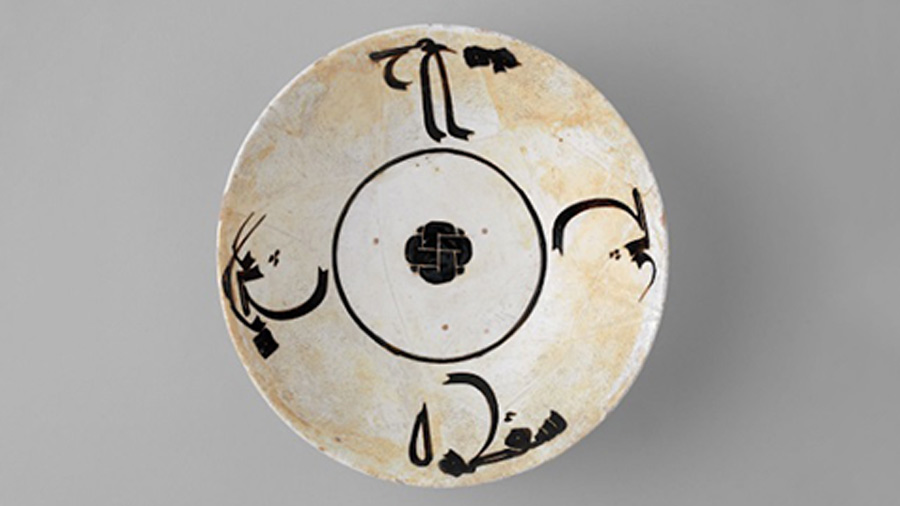
“He who talks a lot, spills a lot”, Iran, circa 10th century, displayed at the Metropolitan Museum of Art, New York
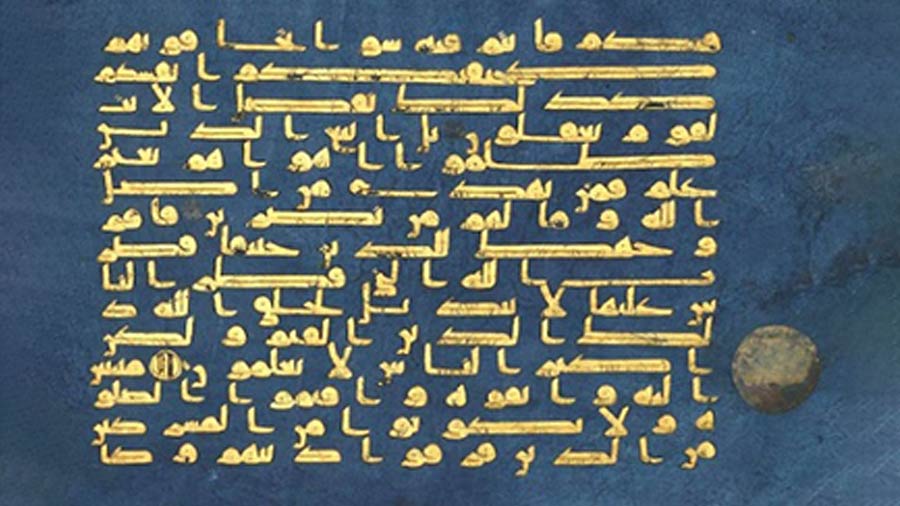
Folio from the ‘Blue Qur’an’, North Africa, 9th century, displayed at the Metropolitan Museum of Art, New York
Susanne Pfeffer, director, Museum MMK für Moderne Kunst, Frankfurt, approached the session from a fresh perspective. “Who knows what a museum is? We all have to permanently think and redefine that. It’s important for me that the museum remains a place of discourse where we always think about what a museum can be and the times we are living in. Museums have to be resistant to just becoming a service tool in society.”

The Infinity Mirrors exhibition, Yayoi Kusama
Amareswar Galla, UNESCO chair on Inclusive Museums and Sustainable Heritage Development and the last speaker of the day, gave voice to an important opinion: “Museums and communities have to work together. In the future, I visualise diverse voices in museum spaces.”
